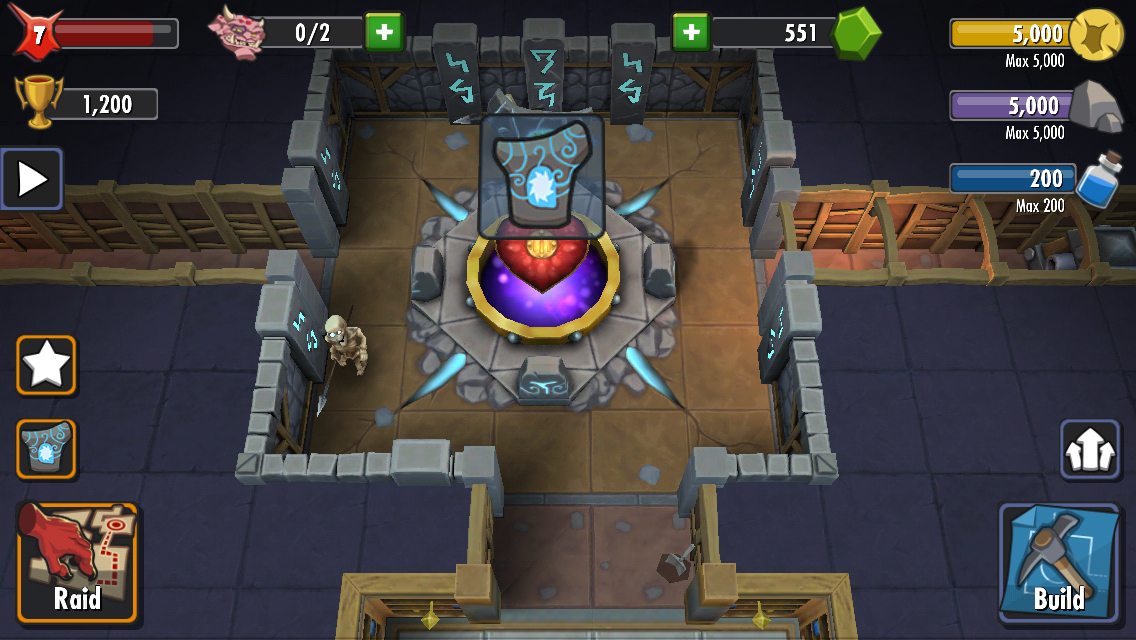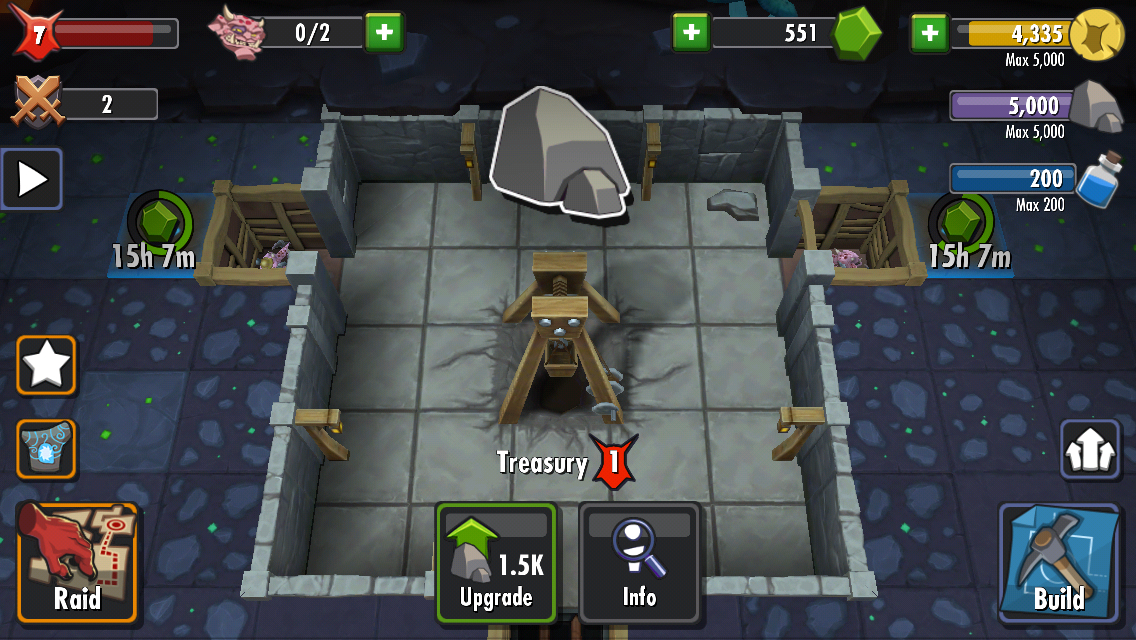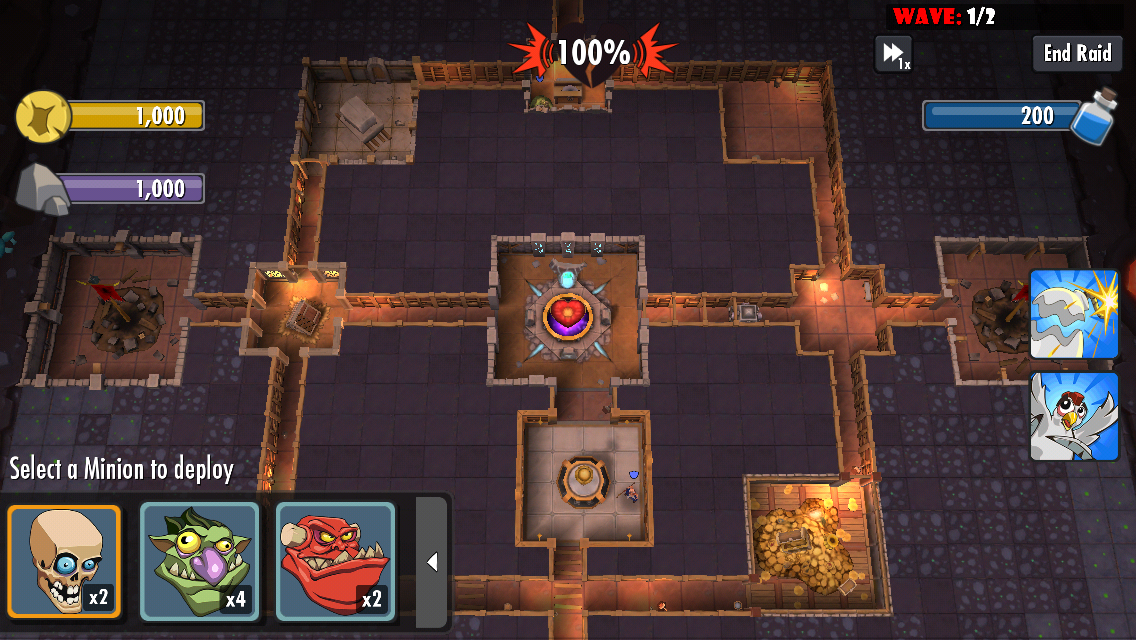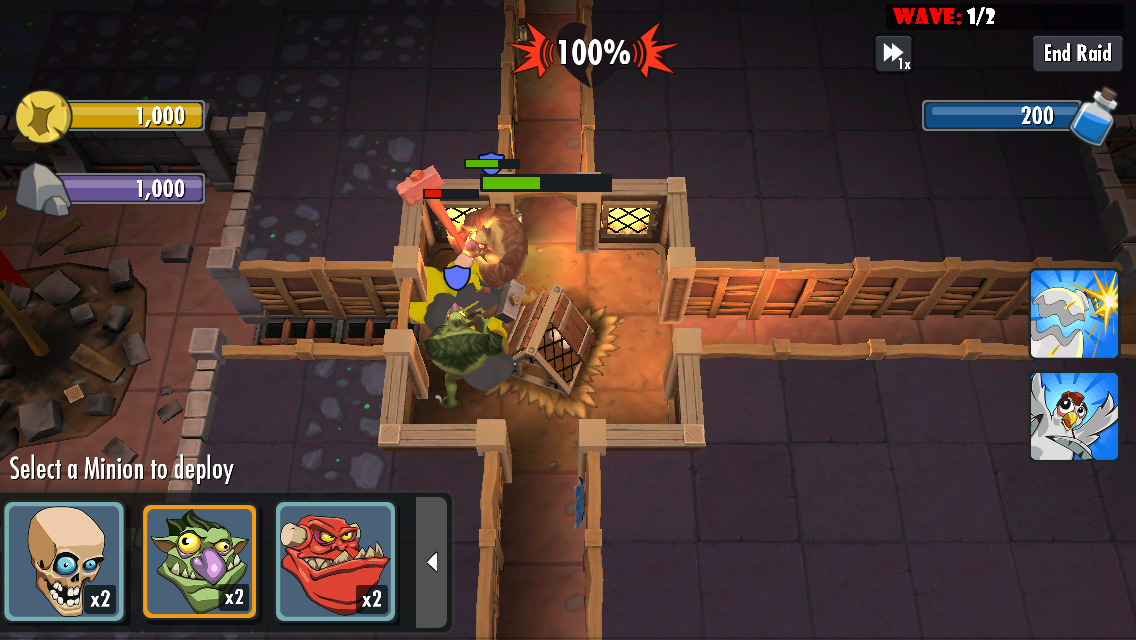 Let me start off by being clear: Dungeon Keeper (Free) isn’t necessarily the most popular game out there, and a lot of that has to do with how stingy it can be if you aren’t paying money. This might make you think it’s not really the best game to offer up a guide for, but in actuality, this is the kind of F2P game that a guide can be most useful for. To be honest, I don’t think you can play Dungeon Keeper optimally without spending money, but if you don’t want to spend money yet want to play this game, well, there are good ways and bad ways to go about that. One of the challenges of putting this guide together is that EA keeps changing things around, scrambling to find an optimal (for somebody, anyway) balance. That means it’s hard for me to use specifics like the costs of things, because they might be different by the end of the week. In lieu of that kind of guide, I’ve decided instead to focus on some general advice and information about things that are unlikely to change too much.
Let me start off by being clear: Dungeon Keeper (Free) isn’t necessarily the most popular game out there, and a lot of that has to do with how stingy it can be if you aren’t paying money. This might make you think it’s not really the best game to offer up a guide for, but in actuality, this is the kind of F2P game that a guide can be most useful for. To be honest, I don’t think you can play Dungeon Keeper optimally without spending money, but if you don’t want to spend money yet want to play this game, well, there are good ways and bad ways to go about that. One of the challenges of putting this guide together is that EA keeps changing things around, scrambling to find an optimal (for somebody, anyway) balance. That means it’s hard for me to use specifics like the costs of things, because they might be different by the end of the week. In lieu of that kind of guide, I’ve decided instead to focus on some general advice and information about things that are unlikely to change too much.

Imp Advice
Abuse the help. Don’t forget to go into your imp subscreen and give them a good smack every now and then. They’ll work twice as fast in this motivated state, but it only lasts for a short time, around a half hour at the time of writing.
Don’t dig out the 24 hour blocks before you need to. You can expand your dungeon quite a bit before digging into the squares that take a full day to clear. Especially in the early going, the last thing you want to do is tie up valuable imps on such a long task needlessly.
Don’t tie up all of your imps on long-term jobs. You should always keep one of your imps relatively free to work on smaller tasks. Generally, you want to keep one imp excavating while the other one handles other important chores around the dungeon. Once you get more than two imps, you can feel free to have more than one imp excavating.
Save up for that third imp ASAP. Two imps aren’t really enough to keep things going once the room and excavation timers get long. You should be saving whatever gems EA kindly throws your way, whether it’s from achievements, excavations, or even the gems they give you in the tutorial that you are supposed to use.

Building Your Dungeon
Think defense. Remember, you’re not just building your dungeon so it looks pretty on your screen. When it comes time to defend, the last thing you want is unnecessary extra paths to your dungeon heart just because they looked nice to have. Think about where you can create chokepoints that can be more easily defended. You don’t want to leave any useless empty spaces, so make use of the ability to fill in blocks when you need to. Make sure you set traps on every possible entry point to your dungeon heart.
Secure your resources. Like most building games, the world of Dungeon Keeper revolves around having enough resources to do things. There are extra gold mines and quarries you can get access to if you can reach them with a tunnel. These have the downside of providing extra entry points to your dungeon in a raid, but it’s worth it to increase the amount of resources you have coming in.
Mind your resource caps. It’s really easy to hit your limit for both stone and gold in the beginning. Those limits are too low to do much of anything worthwhile, however, so you’ll want to upgrade your warehouses and gold treasuries as often as possible. It’s bad enough waiting for resources, but when you can’t even collect them because you’ve hit your limit, it’s even more of a waste of your time.
Plan your dungeon around leveling up your dungeon heart. Check what you need for the next level by clicking on the heart, and make sure you’re working towards those conditions specifically. Your heart’s level will determine which rooms, traps, and minions you’ll have access to. Everything should be in service to getting its level up as quickly as you can to unlock the best goodies.
Install a graveyard as soon as you can. The graveyard is a powerful defensive room, launching poisonous skulls at a pretty decent distance at any creature foolish enough to draw near. Your dungeon heart needs to be level five to build this room, but it’s a real gamechanger once you’ve got it. The unholy temple is another great defensive room, with the ability to hit airborne units. That one becomes available to you at dungeon heart level four.

Laying Your Traps
Hallways are good, especially leading to doors. A nice, strong door with a hallway leading to it is the perfect place to lay some very nasty traps. It’s something to consider when you’re building your dungeon. Don’t forget to upgrade your doors wherever possible, as well. Doors are an important element of defense.
Lead with spring traps. These are very useful for taking out weaker units like scouts, so it’s not a bad idea to put them on the outside edges of any sequences of traps you’re laying down. It’s a good way to take out smaller annoyances while saving your big guns for stronger enemies. Plus, they’re kind of hilarious.
Got an intersection? Get a cannon. Cannons will shoot straight out in any direction, making intersecting hallways a great place to put them. Make sure you put some spike or firepit traps around them to discourage vandals. Freeze traps can be useful for holding a target in place for easier disposal by cannon.
Use your doors as choke points and let unsuspecting invaders have it. You know what makes a really nice welcome mat? Spike traps combined with freeze traps. Or, better still, bug zappers and firepits. Doors will slow down the enemies and hold them in place, and if you’re really lucky, will create a nice little conga line of bad guys. Might as well punish them while they’re waiting around for that door to break. And behind door number one? Fantastic place for a boulder trap. If you’ve built a decent sized tunnel leading to your door, you’ll do devastating damage with a rolling boulder.
Keep in mind, humans aren’t stupid, but they can be predictable. So you have a long hallway leading to a door. Any human player is going to know what’s up with that. They’re going to think you concentrated your defenses on an obvious trap and avoid it. Knowing this, you can set up your dungeon so that there are slightly less obvious routes, expecting humans to go for them. Trap them accordingly.

On The Raid
Trolling is very effective. Surprisingly, for all the cool units available, the most effective way to raid is to just send in huge masses of powered up trolls. Upgrade your workshop whenever you can to make your trolls stronger, and upgrade your hatcheries so that you can throw a ton of them out at once.
The computer is stupid. So very, very stupid. Unfortunately, the computer sometimes controls the targeting of your units. Keep an eye on them to make sure they aren’t dividing and conquering themselves and direct them appropriately. Oh, and all that stuff we talked about with traps? Try not to fall for it yourself.
Ghosts and necromancers are other good options. Ghosts can break through a lot of conventional defenses. Just beware of anti-air defense. Necromancers provide awesome support for your troll legions by raising the dead into useful skeleton minions. That’s also a fun trick at parties.
Don’t make any dangerous enemies. Anyone you go after will have the chance to revenge-attack you. It’s not a good idea to pick a fight with a goliath, in other words, because you might just get spanked both ways. After you attack an enemy, you should have a good idea of what you’re dealing with. Prepare your dungeon’s defenses accordingly.
With any luck, those tips will help out any people brave enough to take on the modern version of Dungeon Keeper. It’s definitely one of those high maintenance games where if you want to get anywhere with it, you really need to be checking in on it pretty frequently and planning timers around your schedule as best as you can. Take these tactics in hand and do your best to impress your dark overlords without signing over your soul.